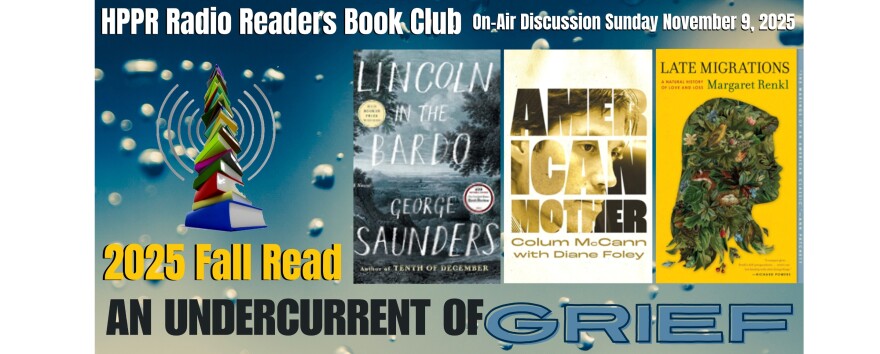Howdy, this is Michael Grauer, native Kansan, long-time resident of the Texas Panhandle and the Llano Estacado, and currently McCasland Chair of Cowboy Culture/Curator of Cowboy Collections and Western Art at the National Cowboy & Western Heritage Museum in Oklahoma City, for HPPR’s Radio Readers Book Club’s Summer Reading List. For the record, there are too many trees here; they make me claustrophobic. I miss the High Plains.
As long-time fan of the writings of William Least Heat-Moon, particularly Blue Highways, and being able to count Jim Hoy as a friend and mentor, I am honored to share about my recent experiences in reading two of their volumes. As a native Kansan and devoted student of the American West since I learned how to read, both authors coalesced for me in the Flint Hills with Heat-Moon’s PrairyErth: A Deep Map (1999) and Hoy’s My Flint Hills:Observations and Reminiscences from America's Last Tallgrass Prairie (2022). My research on the cattle industry, cowboy history, and the Santa Fe Trail, in the last several years has focused on the enormous role the Flint Hills played and plays in those stories. I don’t believe in coincidences; everything happens for a reason. I simply have to listen to the still small voice that nudges me to be observant and be prepared for the next source. In this case, the sources are these two great books.
I attempted at three different times since its publication in 1991 to read PrairyErth. For whatever reason, I kept getting bogged down, not through any fault of the author, but because I didn’t have ears to hear what he was saying during those previous attempts. My father’s family is based in Marshall County, which is part the northern limits of the Flint Hills. When I finally reconnected with that part of my family upon Dad’s unexpected passing in 2013, the ground of my soul was broken out to receive the seeds of those connections; they took firm root in 2015 with a project I was blessed to work on with the Kansas City Public Library. Jim Hoy attended one of my presentations at KCPL and we met there. I have been a fan ever since. Heat-Moon is also a native Kansas Citian (as am I, only on the Kansas side).
The concept of “deep time” was not something I had explored before reading PrairyErth. Heat-Moon’s focus on Chase County, Kansas, by visiting those places, speaking with the people, and mainly walking each one-twelfth of the county in succession helped him connect with that concept of deep time. To me this connection to the place by his physical presence further links Heat-Moon (who is of Osage descent) to others such as ethnographer and linguist Keith Basso in his thirty-year study of working with the White Mountain Apache people in New Mexico, Wisdom Sits in Places. Most importantly, PrairyErth united Heat-Moon with not only the landscape, geology, and natural history of this slice of the Flint Hills, but also the human history of the region in a profound and intimate way.
Likewise, the intimacy—even in its title—of Jim Hoy’s intimate portrayals and recollections in My Flint Hills, is deeply personal. Reared near Cassoday, his crossover into some of the sights and sites in Heat-Moon’s PrairyErth helps bookend the Flint Hills in a fascinating manner. Heat-Moon’s use of quotations on the different aspects of Chase County allows for voices of the past to speak as well as a sense and lens of time-travel, albeit at a kind of arm’s-length distance. Conversely, Jim Hoy’s reminiscences and observations are often first-person accounts. He not only observed the events or places he describes, but more often than not, participated and/or worked in them, frequently on horseback. This memoir is all the more poignant given that Jim Hoy’s signal gift to higher education and the preservation of the Flint Hills at Emporia State University-- where he taught literature and folklore for 45 years—The Center for Great Plains Studies, fell victim to the university’s paper-clip counters’ axe. This is why Hoy’s My Flint Hills is a must-read for those who care about Kansas and the United States as is William Least Heat-Moon’s PrairyErth. I would also strongly recommend Hoy’s Flint Hills Cowboys and Heat-Moon’s River Horse, to continue your studies of this great land.










